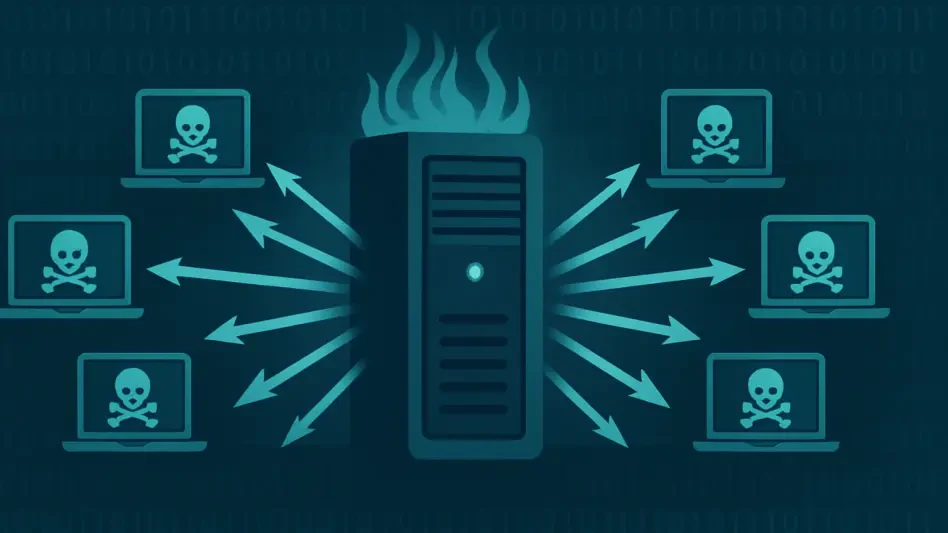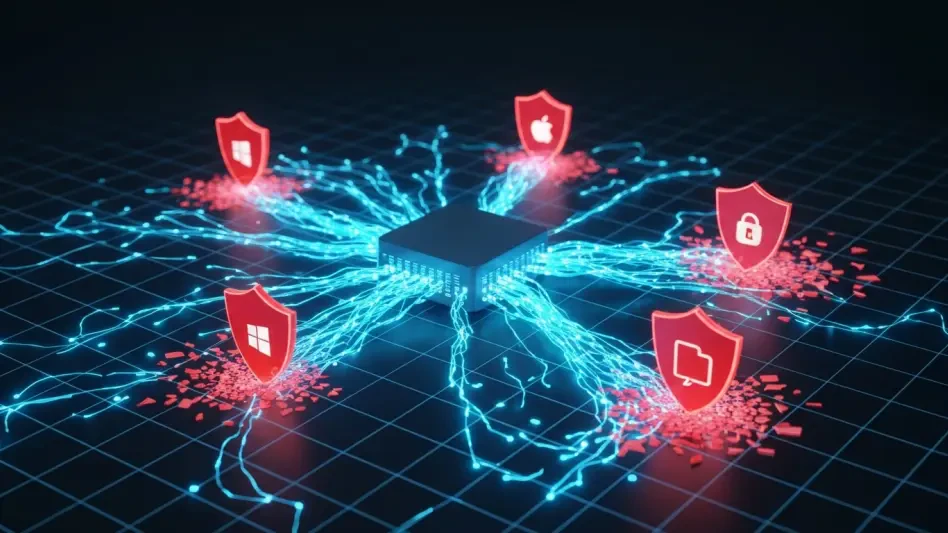In a staggering display of cyber aggression, a formidable botnet has emerged as a dominant force in the realm of distributed denial-of-service (DDoS) attacks, achieving an unprecedented bandwidth of 11.5 terabits per second (Tbps). This botnet, known for its sophisticated design and rapid spread, has compromised hundreds of thousands of devices worldwide, exploiting weaknesses in common hardware to orchestrate attacks that cripple digital infrastructure. The sheer scale of this assault has sent shockwaves through the cybersecurity community, exposing critical vulnerabilities in the systems that underpin modern connectivity. As attackers continue to refine their methods, this incident serves as a stark reminder of the escalating threats facing global networks. The following exploration delves into the mechanics, impact, and broader implications of this cyber menace, shedding light on a pivotal moment in the ongoing battle against digital disruption.
Unpacking the Threat Landscape
Emergence of a Cyber Giant
The rise of this botnet marks a significant shift in the landscape of cyber threats, characterized by its ability to harness an enormous network of compromised devices for devastating attacks. Initially detected through global monitoring efforts, the botnet began its rapid expansion by exploiting a critical flaw in router firmware, specifically targeting a widely used brand. Within a matter of months, the number of infected devices surged from 100,000 to 300,000, demonstrating an alarming efficiency in propagation. This growth was fueled by a malicious script that redirected devices to download harmful payloads, embedding itself deep within system processes to ensure persistence. Such tactics reveal a level of technical prowess that sets this threat apart from earlier DDoS campaigns, highlighting the urgent need for enhanced defenses against such evolving dangers. The scale of this operation has forced experts to rethink traditional approaches to cybersecurity, as conventional tools struggle to keep pace with these innovative attack strategies.
Technical Sophistication and Scale
Beyond its rapid spread, the botnet showcases a remarkable level of sophistication through its dual-version propagation engine, which exploits both newly discovered and known vulnerabilities to infect devices. This adaptability is further enhanced by a modular design that allows for seamless updates to encryption methods and communication protocols, rendering countermeasures obsolete almost as soon as they are deployed. During the record-breaking 11.5 Tbps attack, a combination of SYN, UDP, and DNS amplification techniques was employed, alongside custom packet sequences designed to evade standard mitigation efforts. The result was widespread service outages and degraded performance for numerous organizations across the globe. By utilizing GRE tunneling to distribute traffic among multiple command-and-control servers, the botnet ensures synchronized and overwhelming packet floods. This technical ingenuity underscores the growing complexity of cyber threats and the pressing challenge of developing robust solutions to combat them.
Implications for Cybersecurity
Weaponization of Everyday Devices
One of the most troubling aspects of this cyber threat is its exploitation of Internet of Things (IoT) devices, particularly routers, which are often overlooked as potential vectors for large-scale attacks. By targeting vulnerabilities in everyday hardware, attackers have transformed these devices into powerful tools for disrupting critical infrastructure, as seen in the massive bandwidth unleashed during the recent assault. The botnet initiates environment checks to avoid detection in analysis settings, scanning for debugging tools or virtualization markers before embedding itself. Once installed, it communicates with command servers using a custom encryption protocol, receiving instructions for various malicious tasks. This incident highlights a broader trend where mundane technology becomes a weapon in the hands of cybercriminals, emphasizing the need for manufacturers to prioritize security in device design and for service providers to adopt more vigilant monitoring practices.
Challenges in Detection and Mitigation
Detecting and mitigating this botnet presents significant hurdles due to its advanced stealth mechanisms and ability to disguise itself as legitimate system processes. The malware’s persistence across device reboots, achieved by altering critical system files, complicates efforts to remove it once infection occurs. Furthermore, its continuous adaptation through modular updates and integration of new exploits ensures that it remains a step ahead of traditional security measures. The global impact of the 11.5 Tbps attack, marked by service interruptions and performance degradation, illustrates the inadequacy of existing DDoS mitigation strategies against such tailored attack patterns. Cybersecurity professionals face an uphill battle in developing tools capable of countering these innovative threats, necessitating a shift toward proactive security practices. The evolving nature of this botnet serves as a call to action for stakeholders to invest in advanced defense mechanisms and collaborative efforts to safeguard digital ecosystems.
Future Pathways for Defense
Reflecting on the havoc wreaked by this botnet, it becomes evident that the cybersecurity landscape has been forever altered by the scale and complexity of such attacks. The rapid assembly of a 300,000-strong network of devices and the delivery of an 11.5 Tbps assault underscored the vulnerability of modern networks to IoT-based threats. In response, experts advocate for a multi-layered approach to defense, integrating real-time threat intelligence with enhanced firmware security standards for manufacturers. Collaborative initiatives between industry players and security researchers are deemed essential to stay ahead of evolving tactics. Moreover, the incident prompted discussions on the development of adaptive mitigation tools capable of countering custom attack patterns. As a pivotal moment in cyber warfare, this event urges a collective push toward innovative solutions and heightened awareness, ensuring that the lessons learned pave the way for stronger protections against future digital onslaughts.








